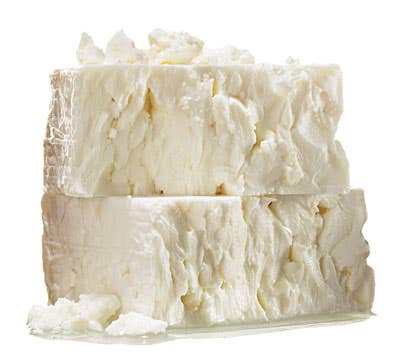
Fabled Feta
Greeks are particular about their feta. Some like theirs soft and mild; others prefer it hard and crumbly. Some crave a pungent, chevre-like flavor, others a lemony-sour tang. Traditionally, feta has been made by shepherds from the milk of sheep and goats that graze on grasses native to a particular valley, plain, or mountain range—which gives the animals' milk, and the cheese made from it, a distinctive regional flavor. Most feta is still made in small dairies, which buy milk from nearby farmers. The cheese makers scoop the curds into metal molds to drain overnight; in the morning they sprinkle the blocks of young cheese with salt and stack them in a wooden barrel or tin container. The container is then topped off with whey and stored for 60 days so that the cheese can mature. When I buy feta, I keep it in the fridge, submerged in brine. I often doctor the brine to adjust the flavor of the cheese—if it's very salty I store it in plain water to temper the salinity; if it's very sharp I add a little milk. Like many Greeks, I use feta at just about every meal, adding it to salads, stuffing it into pies, and crumbling it on stews. And I usually leave a generous slice of feta on the table all afternoon, to be nibbled on during the long hours between lunch and dinner.
Keep Reading
Continue to Next Story










